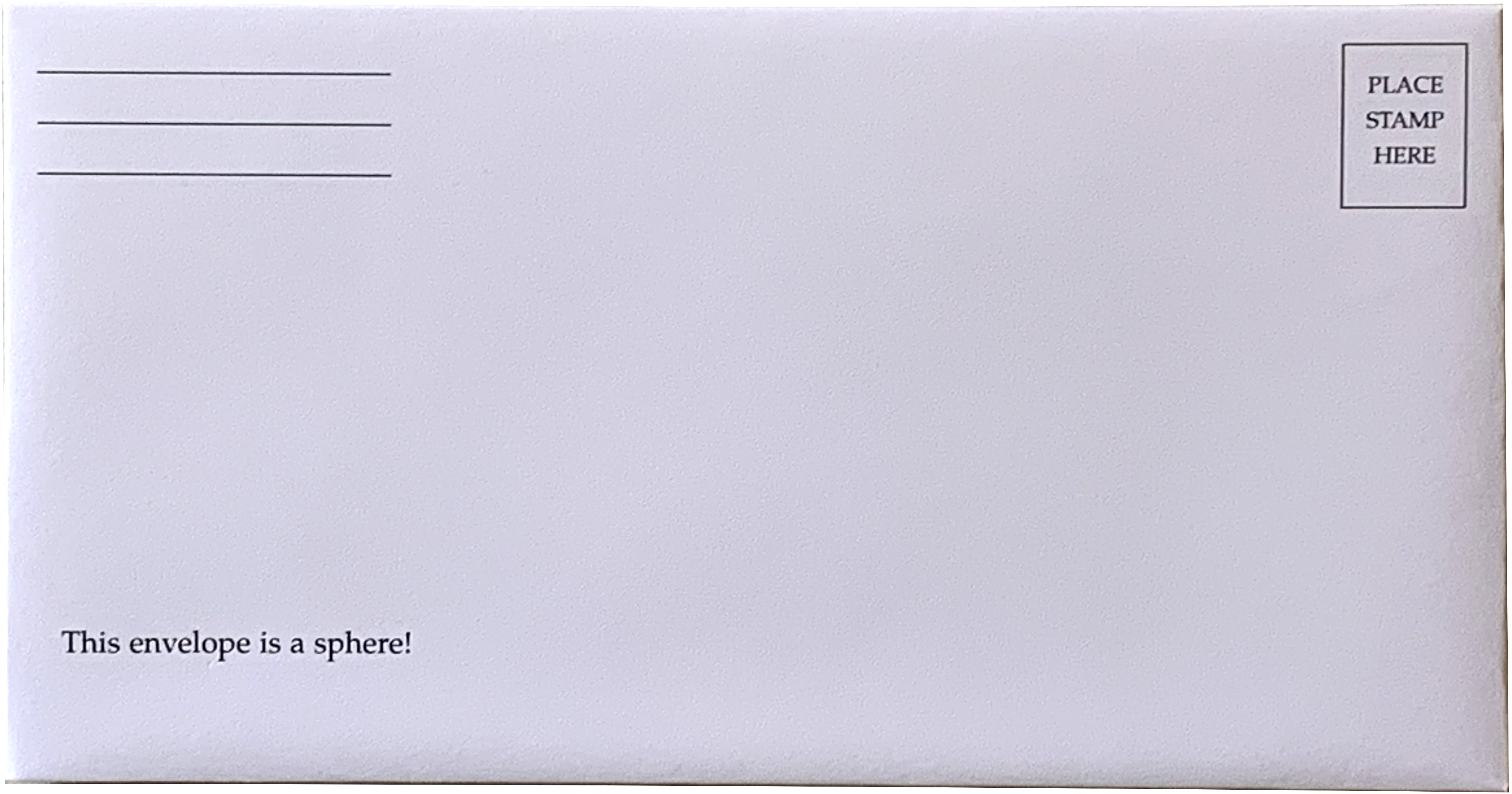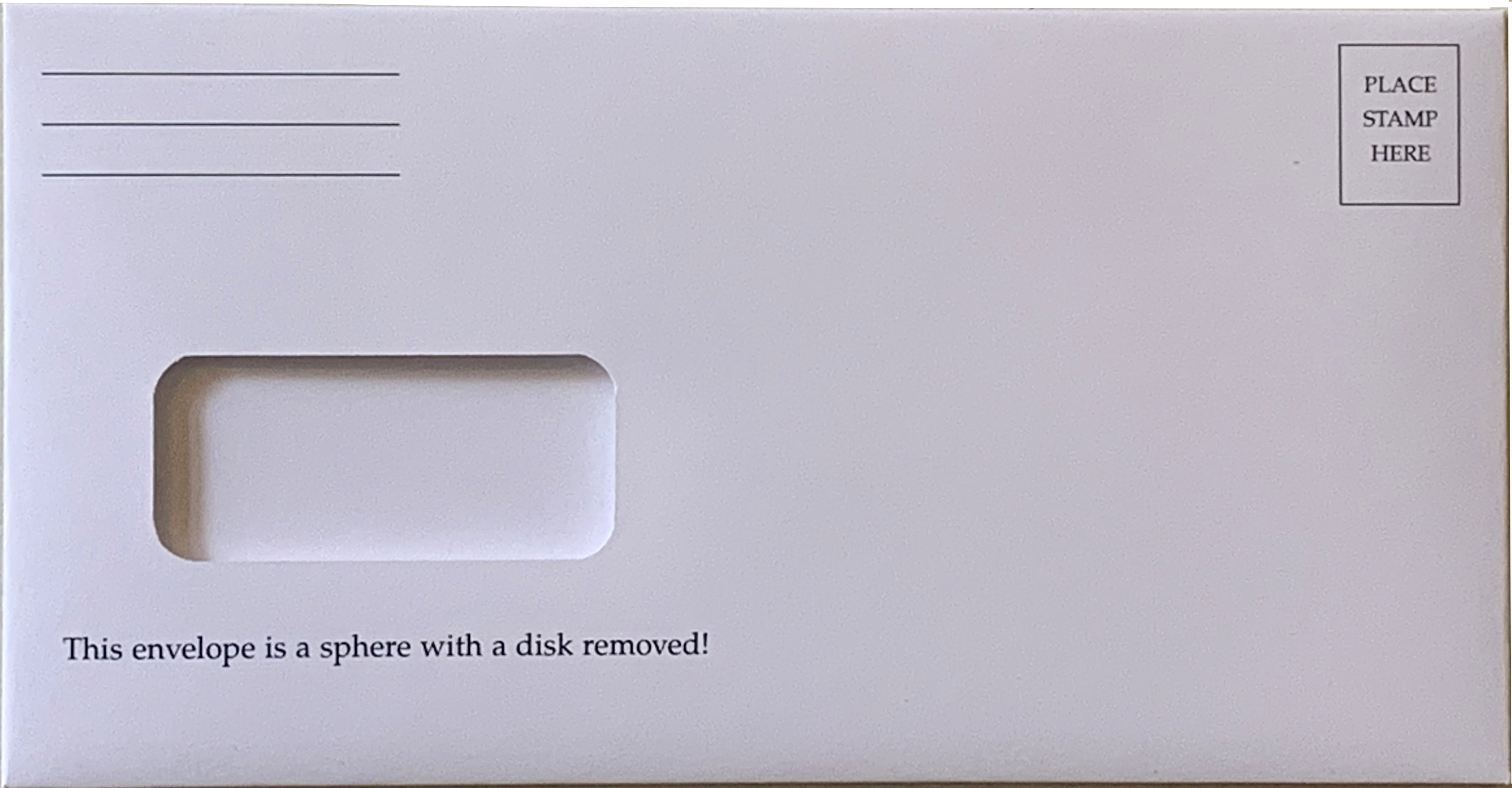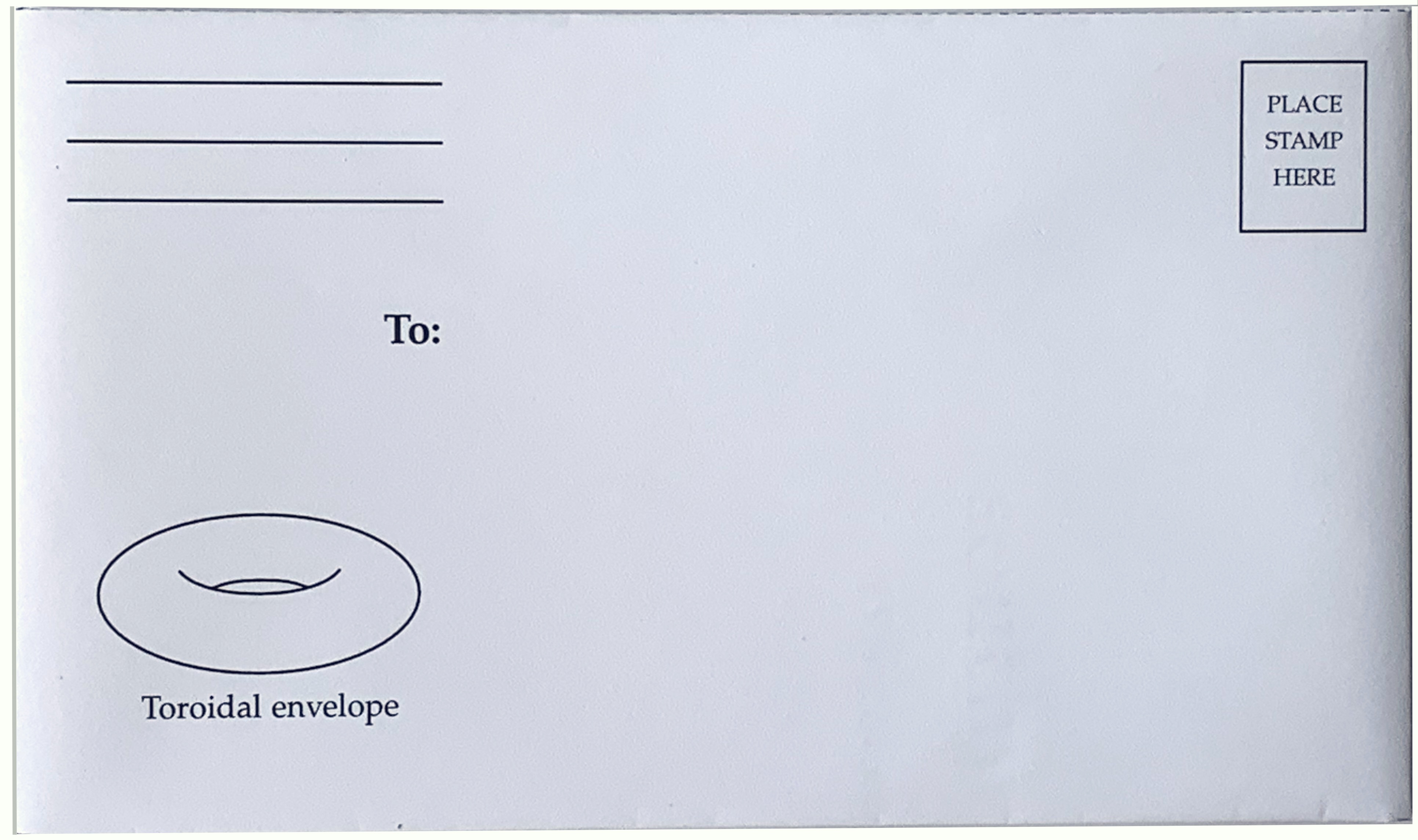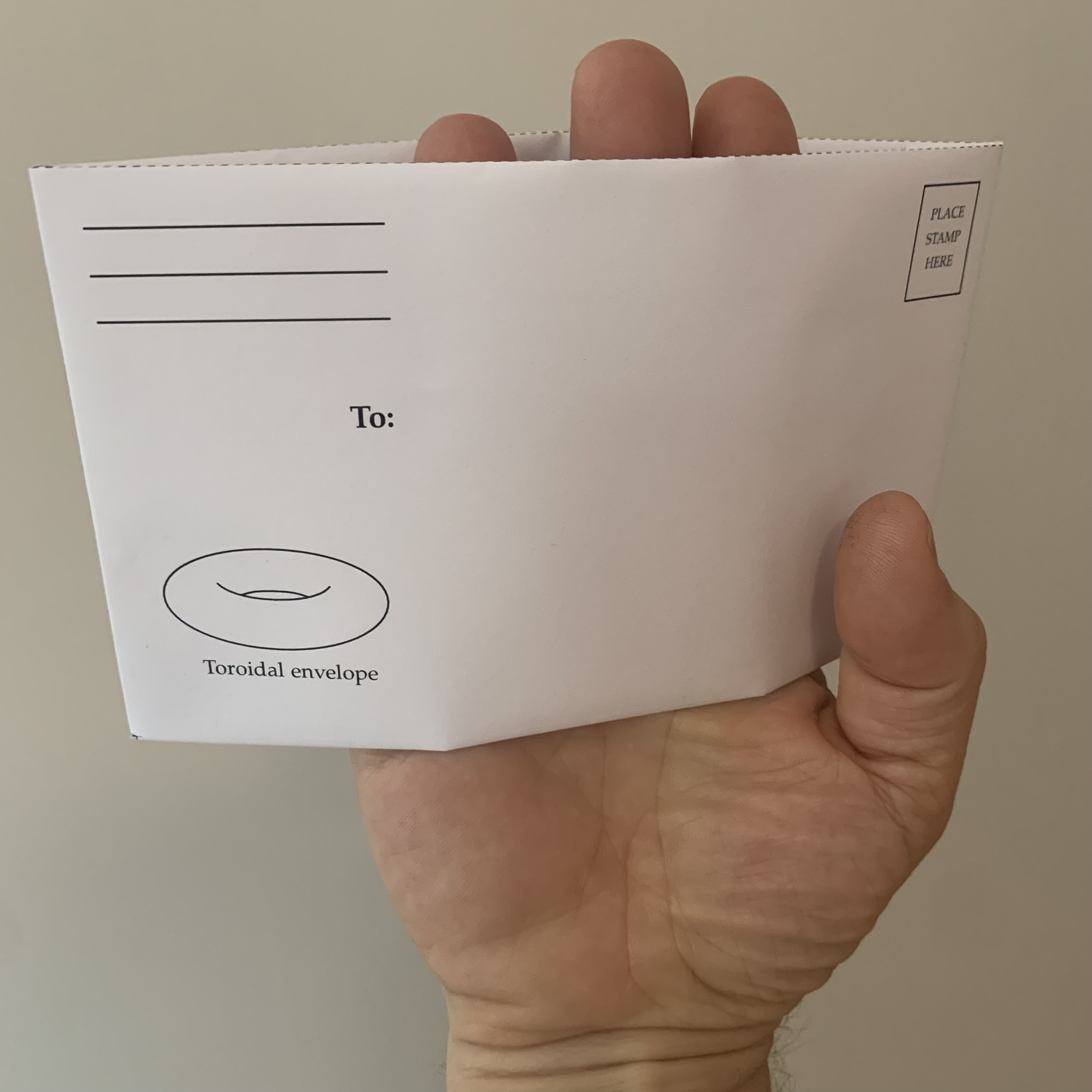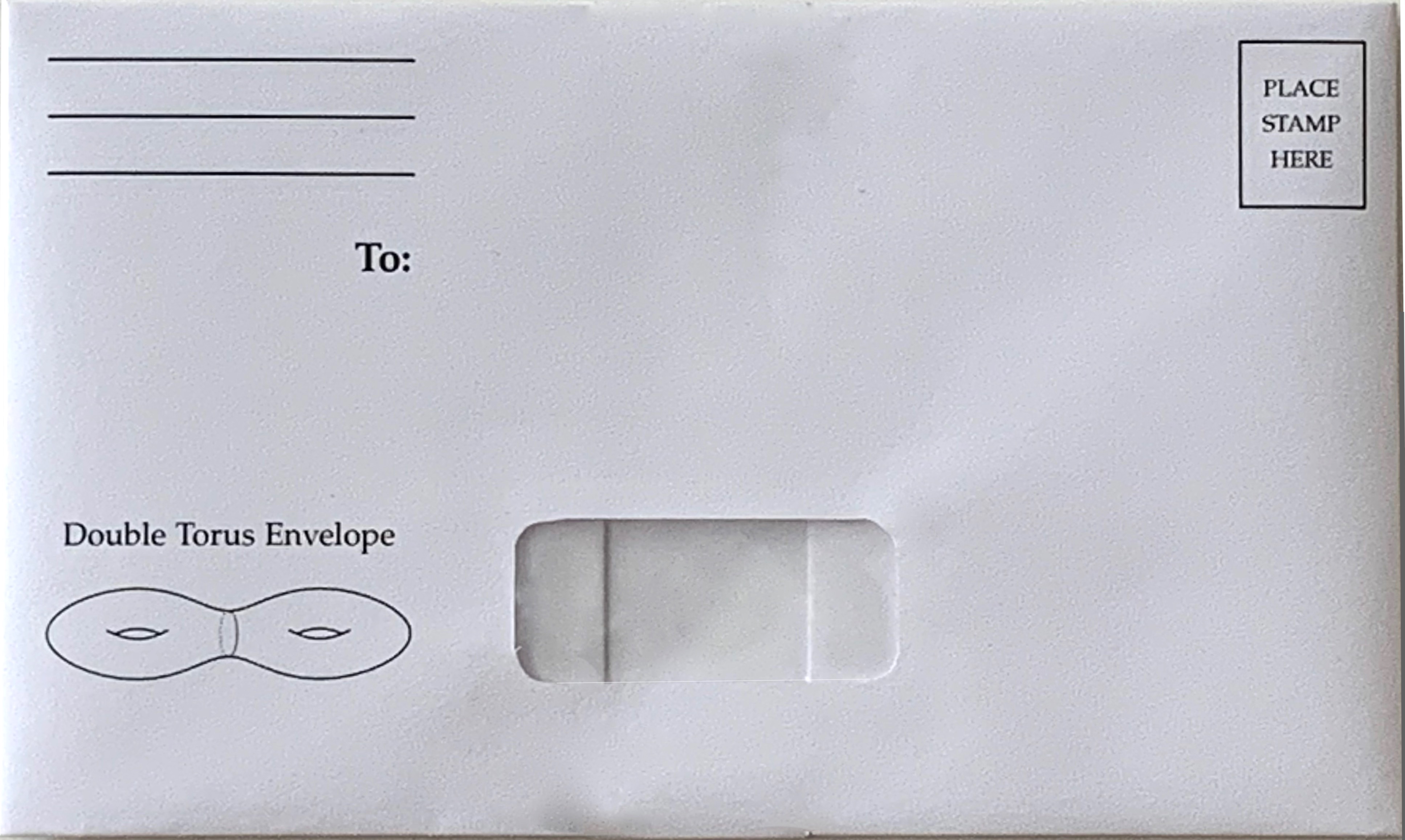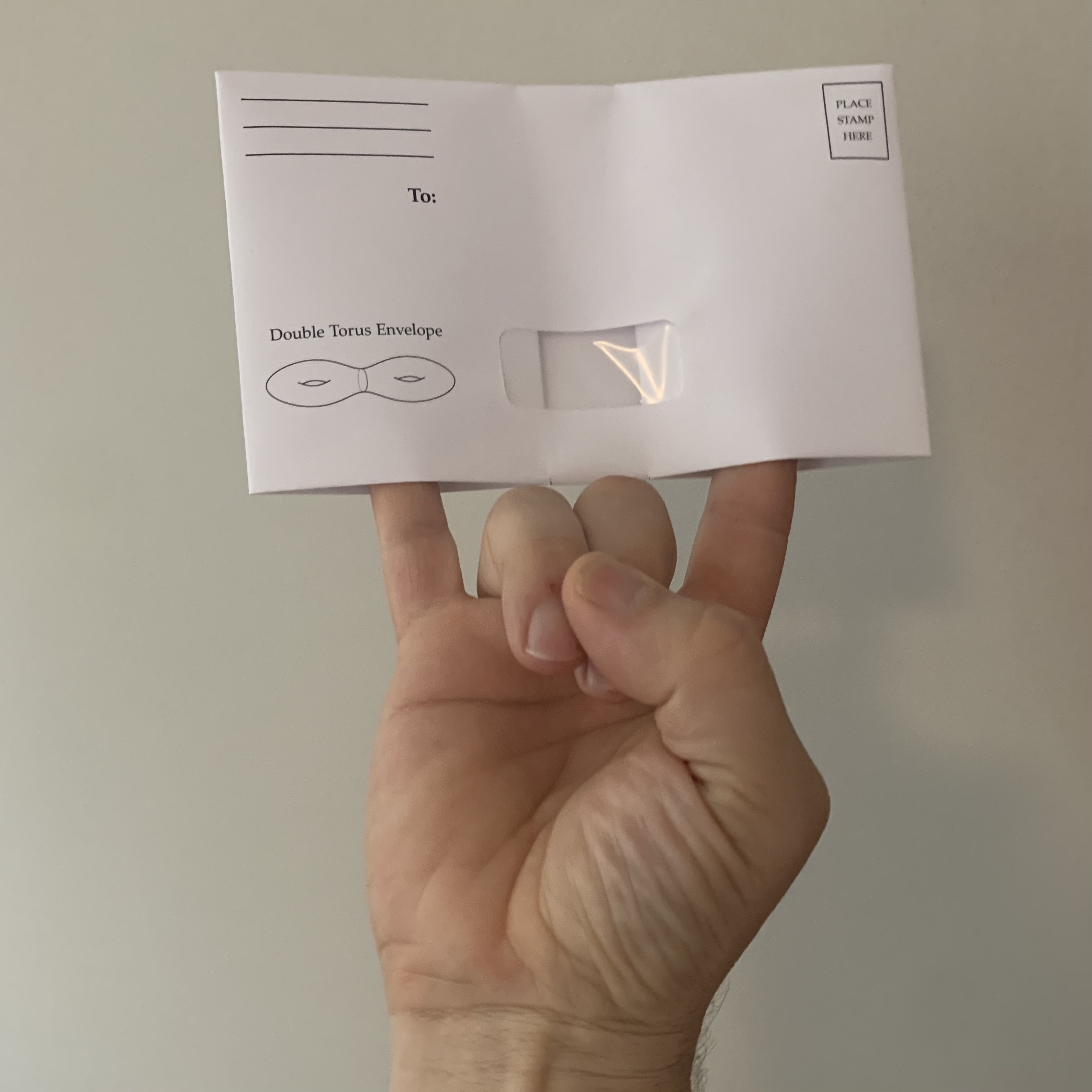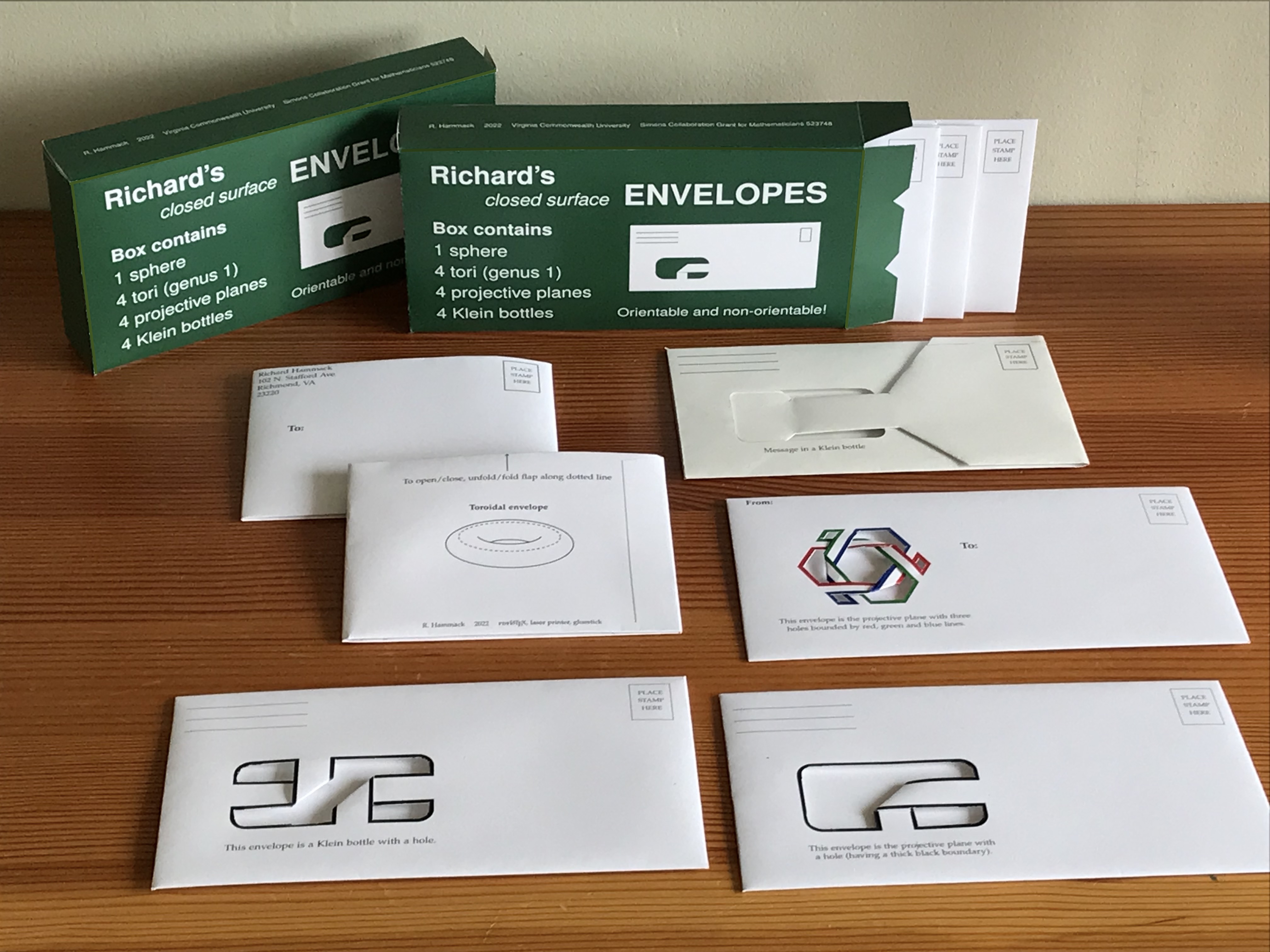In mathematics, a closed surface is a finite surface that has no boundary. Well-known examples include spheres, Klein bottles, and tori. This page describes my recent project of designing mailing envelopes that are closed surfaces. The envelopes are the subject of two short papers: most recently in MAA FOCUS, here, and also in the proceedings of Bridges 2022 at Aalto University, Finland, here. The YouTube video of my conference presentation (about 8 minutes) is here. These artworks were exhibited at Bridges 2022 (Helsinki, Finland) and at the 2023 Joint Mathematics Meetings (Boston, MA). In Boston they won the prize for Best Photograph/Painting/Print. They are also included in the group show Seeing the Unseen: Math and Art, in the Wignall Museum of Contemporary Art at Chaffey College (Jan 8-March 9, 2024).
The mail arrives. Pick up a letter, and
behold a topological curiosity. The envelope divides space into
two regions: You are outside, and a letter is inside. The envelope
is a sphere! Another envelope contains a bill. It has a window
that reveals your address, which is printed on the bill. The
envelope is a sphere with a disk removed!
So it was some years ago that I wondered what other mathematical surfaces can be sent through the mail. Here is a portfolio of the envelopes that I created. Each is a topologically accurate (but flat) realization of a surface (such as a Klein bottle, torus, projective plane, etc.).
One of my first constructions was a Klein
bottle (Figure 2) having the form of a flat tube with a window,
folded so that one end of the tube passes through the window and
glues to the other end. There is no need to open this envelope,
because it has no interior! I use it like a postcard, with a
message on the back.
Like all of my envelopes, the Klein bottles
begins life as a LaTeX file that is typeset, printed, cut, folded
and glued. But it’s not really finished until it’s mailed to a
friend or colleague. I see my envelopes as being closely aligned
with printmaking, with the return address and postmarked stamp
standing in for a signature and edition number.
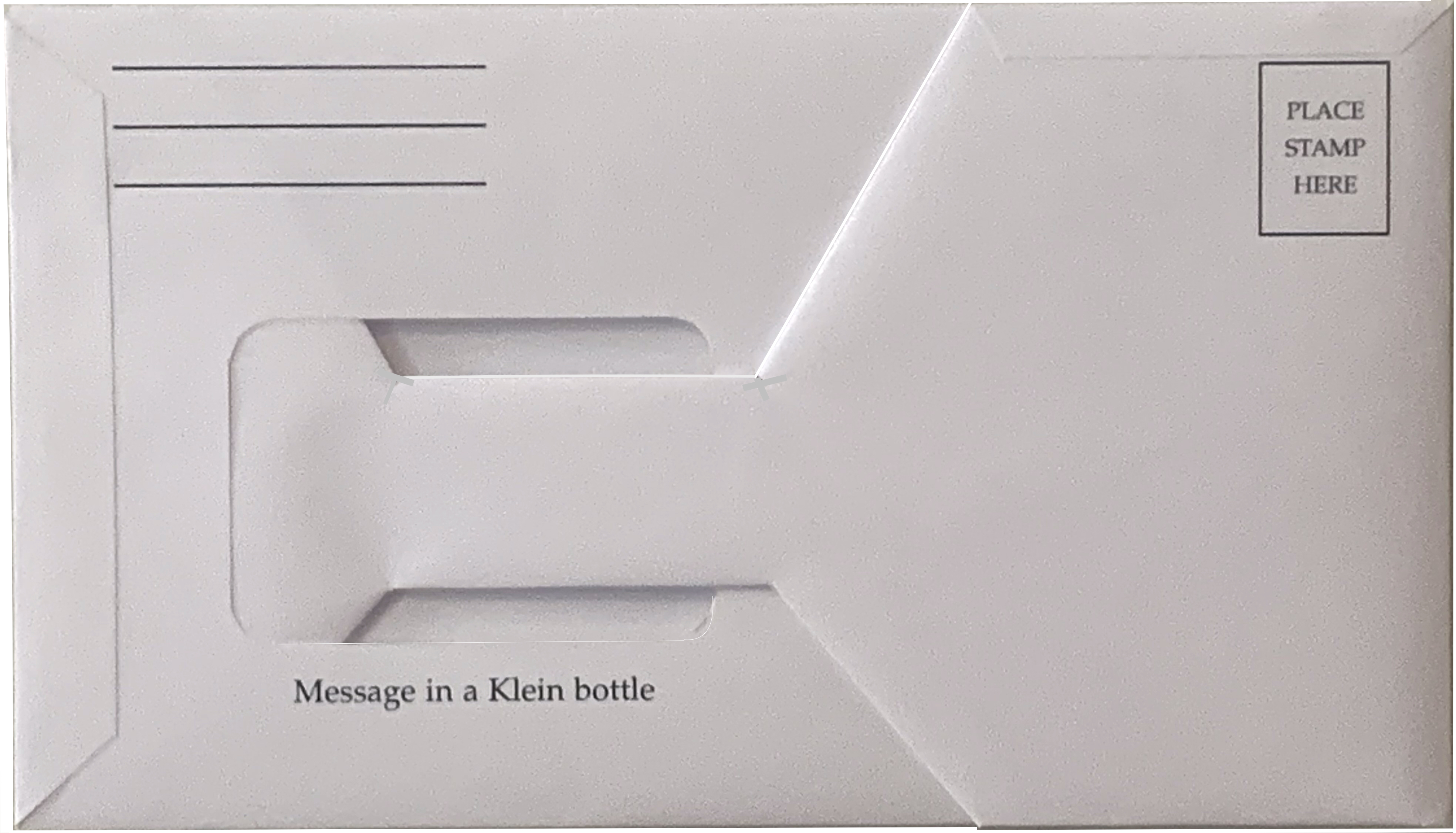
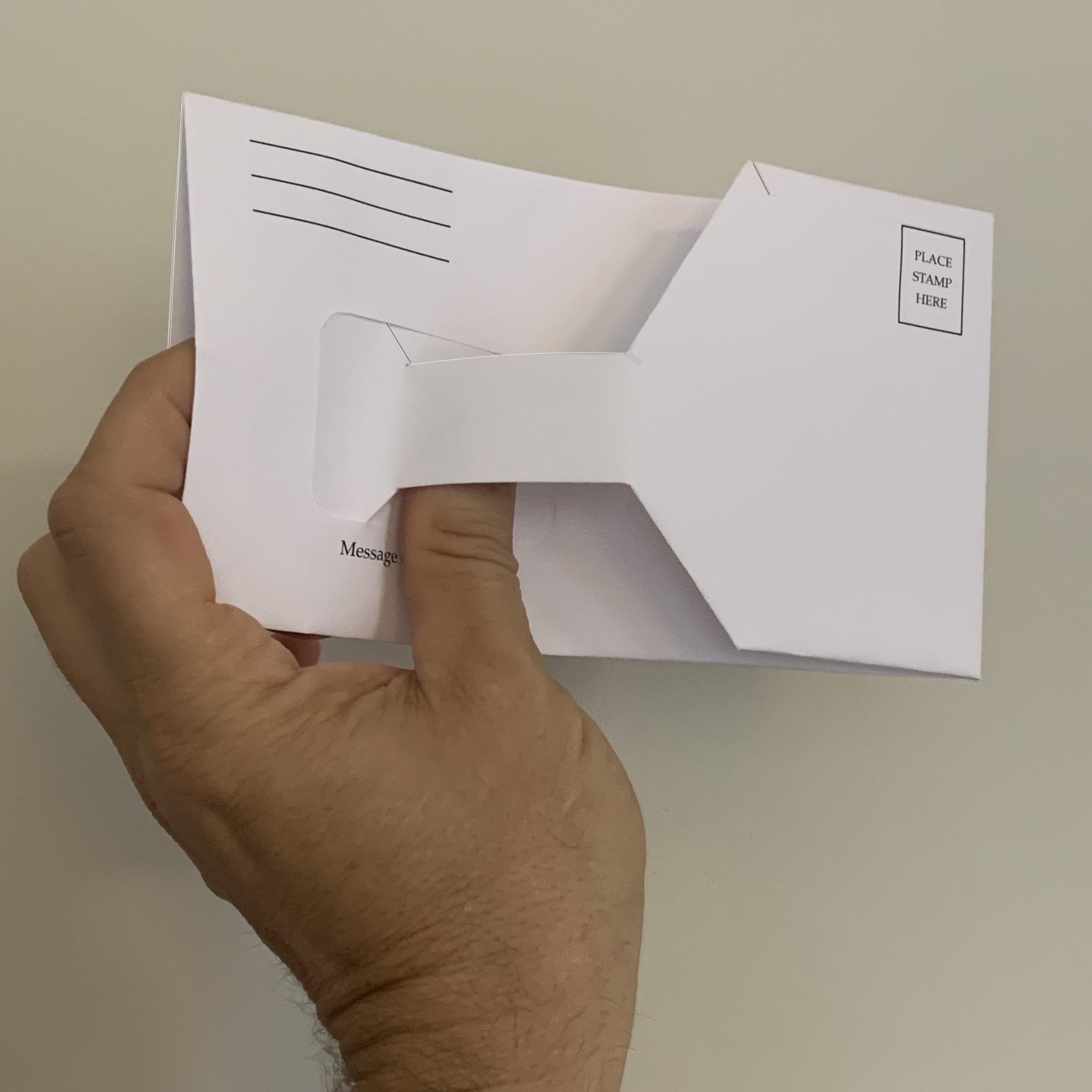
Figure 2. Message in a Klein Bottle. Printed on a legal-size sheet, it is then cut, folded, glued ... and mailed!
Figure 3 shows two envelopes obtained by
attaching folded strips to a window. The first is a projective
plane (with a hole). The second is another realization of a Klein
bottle (with a hole). Each strip is a portion of a Mobius band
that gives passage from the “outside” of the envelope to the
“inside.” In theory, one could add n strips in sequence
around the window, resulting in a sphere with n cross-caps
(and one hole). By the classification theorem for compact
surfaces, it’s therefore possible to make a one-holed envelope
that is any non-orientable, connected, compact surface we desire!
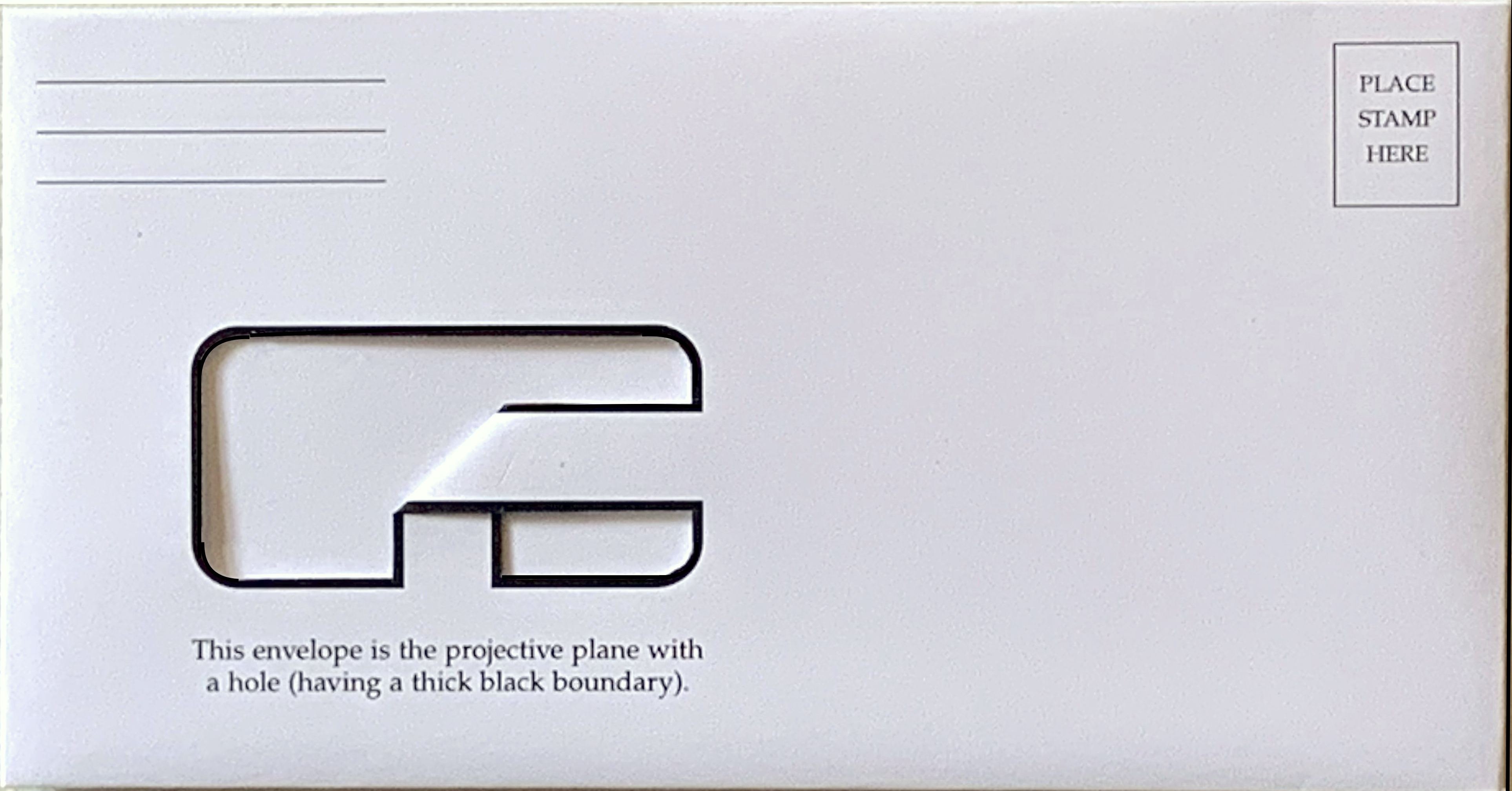
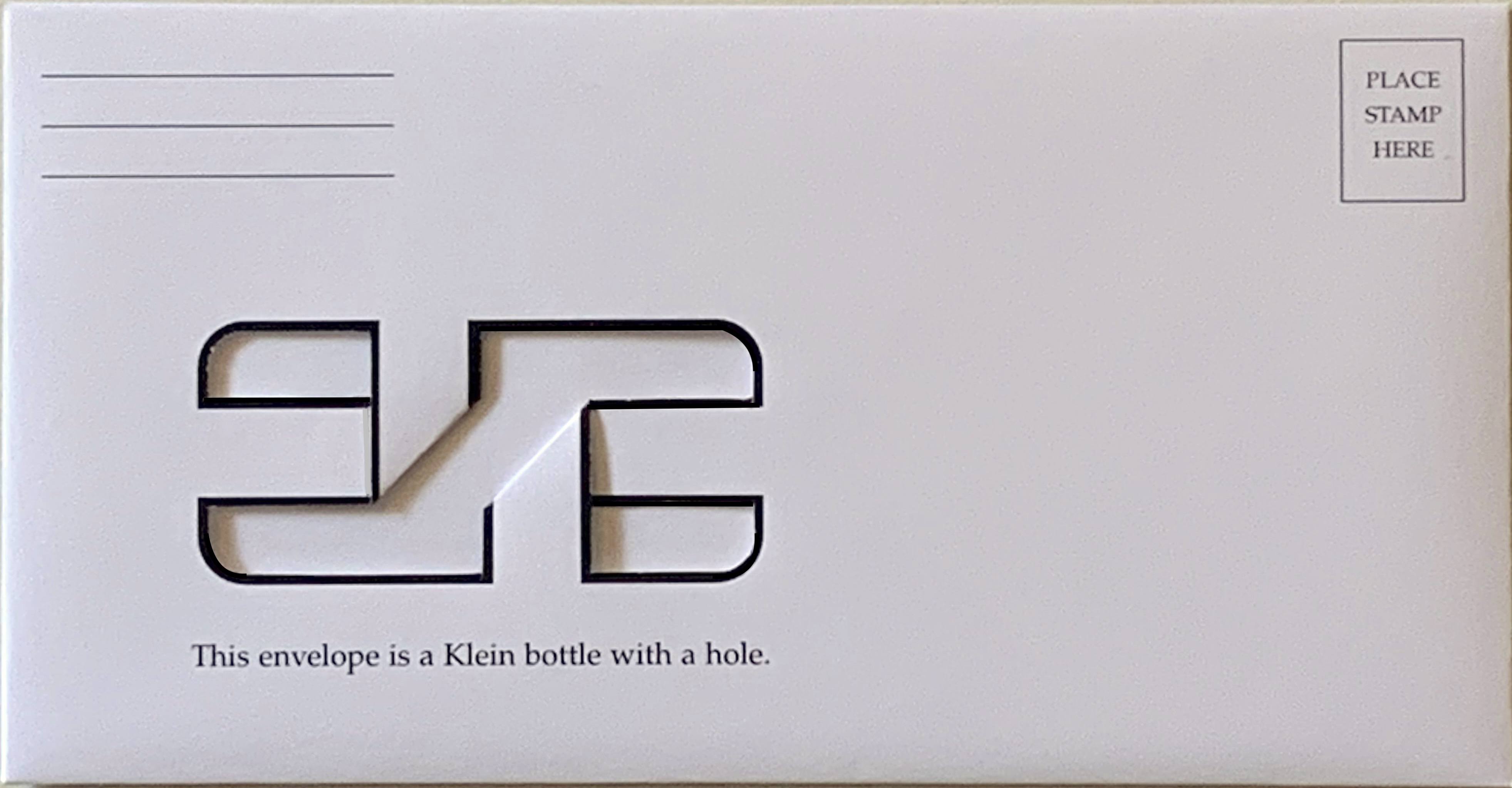
Figure 3. Left: A projective plane (sphere with one cross-cap). Right: A sphere with two cross-caps. Each envelope has exactly one hole, bounded by a black contour.
But the placement of the strips is significant. The envelope in Figure 4 has a hexagonal window and three interlocking folded strips. It has three holes, bounded by red, green and blue lines. But it is not a sphere with three cross-caps, as the reader can verify by computing its Euler characteristic (after mentally capping the three holes with hexagons). The Euler characteristic is -1, so the envelope is a projective plane. It is, in fact, a flat variant of Boy’s surface. Werner Boy discovered this fascinating surface in 1901 when his dissertation advisor David Hilbert asked him to prove that the projective plane cannot be immersed in three-dimensional space. Instead, Boy proved the opposite by producing a beautiful immersion with 3-fold symmetry.
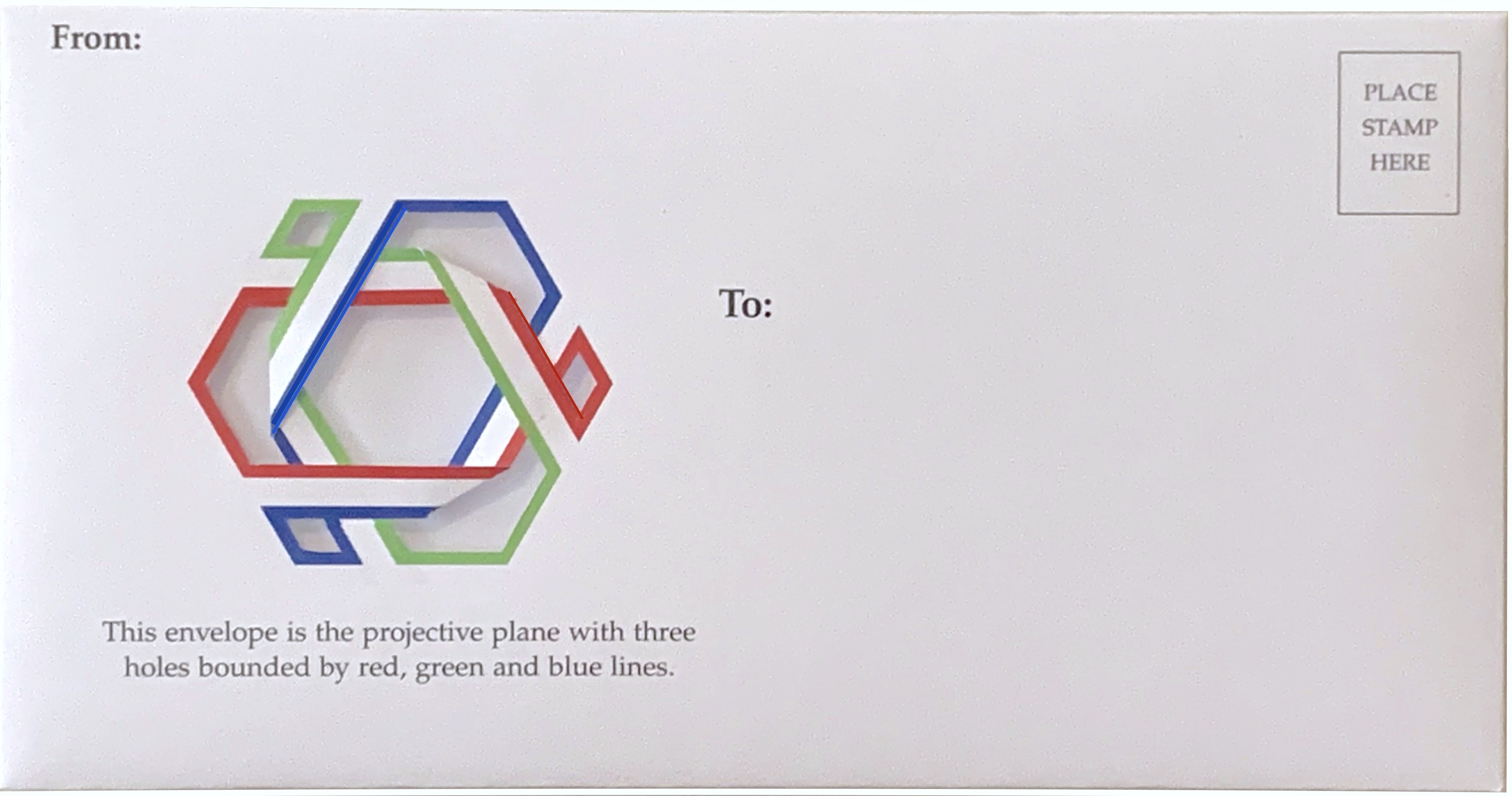
Figure 4. Boy's surface (with three holes). If the bands were widened, the three holes would narrow into three slits through which the paper passes through itself.
Not all of my envelopes are non-orientable. Figure 5 shows my toroidal envelope. It has a flap at the top that opens to accept a cylindrical letter. I also have a double tours (Figure 6). It has a transparent plastic window so that the viewer can peek in and better comprehend its structure.
I exhibited these envelopes as a boxed set that viewers could pick up and handle (Figure 7).
